FAQ
- Bolivia climbing questions
-
Mallorca island and rockclimbing
- What are main specifics of rockclimbing trip to Mallorca
- Mallorca island impressions
- Rockclimbing safety Spain
- Mallorca climbing accommodation
- What season is possible for rockclimbing in Mallorca
- Transport accessibility of climbing sectors in Mallorca
- Active vacation in Mallorca
- Saint Anthony night in Mallorca
- Peru climbing questions
- Gear reviews
-
Safety in the mountains
- How NOT to climb the summit?
- Mountain navigation
- At the limit of possibilities
- Mountain thunderstorm
- Solo ascents and mountain trips alone
- Mutual responsibility in mountaineering
- Safety illusions in the mountains - a rope
- Independent team of two
- Mountain troubles
- Psychological problems in the mountains
- Health in the mountains
-
Elbrus questions
- Elbrus climbing gear
- Climbing Elbrus with children?
- Mount Elbrus location?
- Elbrus logistics
- How to get to Mount Elbrus?
- Elbrus German airfield?
- Elbrus difficulty grade
- 5 points beginner must know about Elbrus
- How to prepare for Elbrus?
- Are there avalanches on Mount Elbrus?
- Climbing Elbrus solo?
- Seasonality of climbing Mount Elbrus
- How much time climbing Elbrus takes?
- Clothes for Mount Elbrus?
- Pressure at the top of Elbrus?
- Elbrus air temperature
- Elbrus sightseeing
- How much to climb Elbrus
- Gear questions
- Mountaineering questions
- Mountain climbing training
-
Rockclimbing questions
- Rockclimbing gear
- How to choose your first rockclimbing shoes
- The hand power in roclcimbing
- What is Rockclimbing tours
- Non olymnic rockclimbing
- What is rockclimbing?
- Where do you climb?
- Where and when we organize our rockclimbing programs?
- What is rockclimbing?
- Rockcliming program class?
- Climbing motivation
- Horse riding tours
- Iceclimbing questions
-
Questions on the alpine programs
- What to climb in Morocco?
- Weekend summit climb
- Georgia 2023
- Pico Aneto - what is that mountain?
- Mountain programs format
- Mountain climbing food ration
- Queries on the alpine program climbing Mount Bazarduzu
- Queries on the Kamchatka alpine program climbing
- What is combined program?
- What is sightseeing program?
- What is pilot program?
- What programs you have of the medium complexity level?
- Basic expedition rations
- Prices for the mountain climbing programs
- Queries on the Mountain Course in Adyl Su valley
- Program complexity?
- Questions about MCS AlexClimb
- Questions related to trekking programs
Gaz cartridge refill
Text version for mobile device in English
Versión de texto para dispositivo móvil en español
MCS AlexClimb Mountaineering School
The text that I want to offer you is not a guide to action. The manipulations mentioned in this article are directly prohibited by safety regulations, and if performed at your own risk, require experience and clear understanding of the level of responsibility.
So, the question is: is it possible to refill a disposable tourist gas cylinder (cartridge) for portable stoves/heaters/lamps?
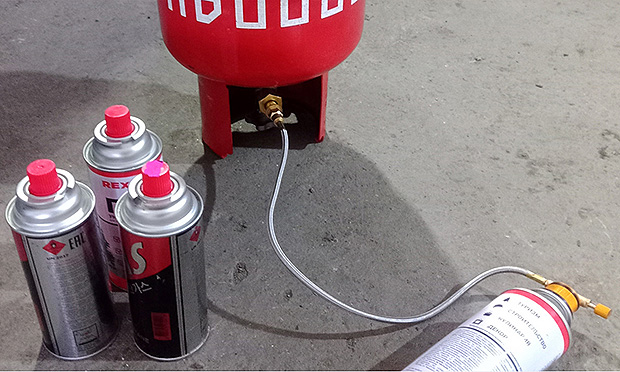
Refilling portable gas cartridges
After a detailed study of the subject, I got the following answer: refilling disposable tourist gas cylinders is technically possible, despite the fact that it is not officially certified, is directly prohibited by the manufacturer and is unacceptable from a safety point of view.
Although many outdoor lovers, including myself, do it.
For use with portable tourist gas devices, at the moment, different manufacturers produce 3 main types of portable cartridges, which differ from each other in the design of the bypass valve. (The volume of the cartridge does not depend on the design of the valve and is traditionally 470 (450), 230, 100 grams).
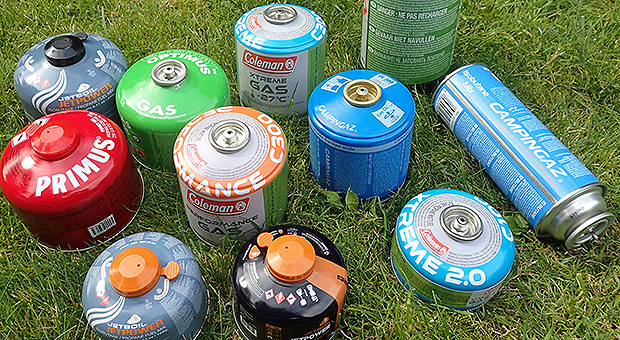
The most common sizes of portable gas cylinders
The most popular type of the connection of portable cartridges with the device is the "Primus type" - cylinders with a threaded connection. There are also cylinders with a "bayonet" mount "Easy Click" (Camping gas type) and EN 417 cylinders (collet mount).
For all three valve designs, Chinese craftsmen produce adapters that allow not only to use cartridges with different types of gas gear, but also to refill them using a standard device.
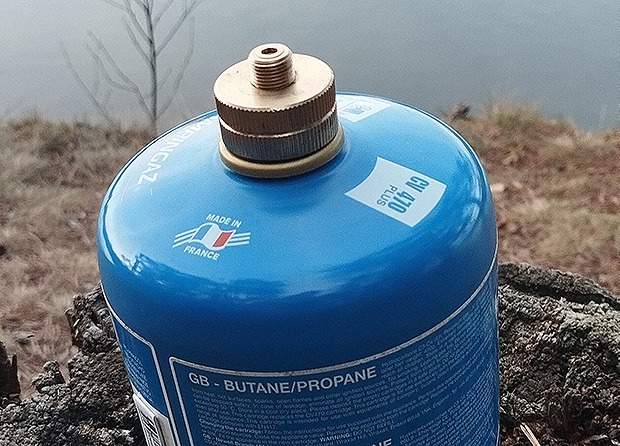
Adapter from Easy Click to threaded connection of tourist gas cylinder
In addition to the types mentioned, there are also cylinders without a valve at all (pierced type), but there are no questions about refilling them, since it is technically impossible. But with the rest, things are more interesting.
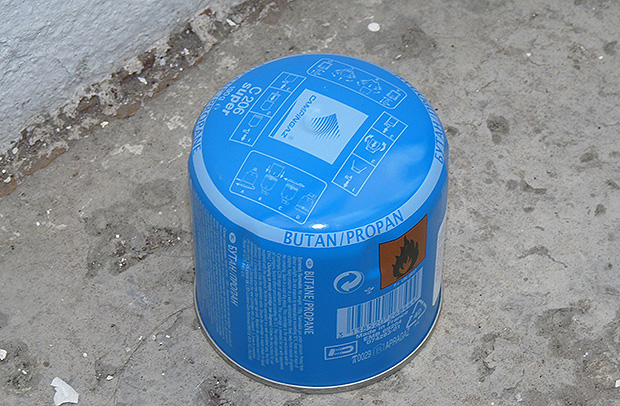
The butane "sting cartridge" is the only type of cylinder, the refilling of which is physically impossible
Refilling of any portable gas cartridges is prohibited by their manufacturer.
Safety precautions clearly confirm this restriction - the reasons stated below fully justify this prohibition.
Nevertheless, the design of the valves, in all cases, allows refilling of the cylinder.
Reasons for the prohibition on refilling
In addition to the obvious marketing reasons (it is very profitable to sell package 60 times more expensive than the contents), portable gas cartridges have a number of technical limitations associated with the properties of the gas mixture that the manufacturer fills them with.
To understand the specifics of the issue, it is enough to understand two simple but important physical properties of the components of the butane/propane gas mixture, which is in the portable gas cartridge.
The expansion coefficient of butane is 30% lower than of propane - this means that the gaz mixture with the predominance of butane is less dangerous when the ambient temperature increases. This is important when using thin-walled cylinders, which can explode under excessive pressure.
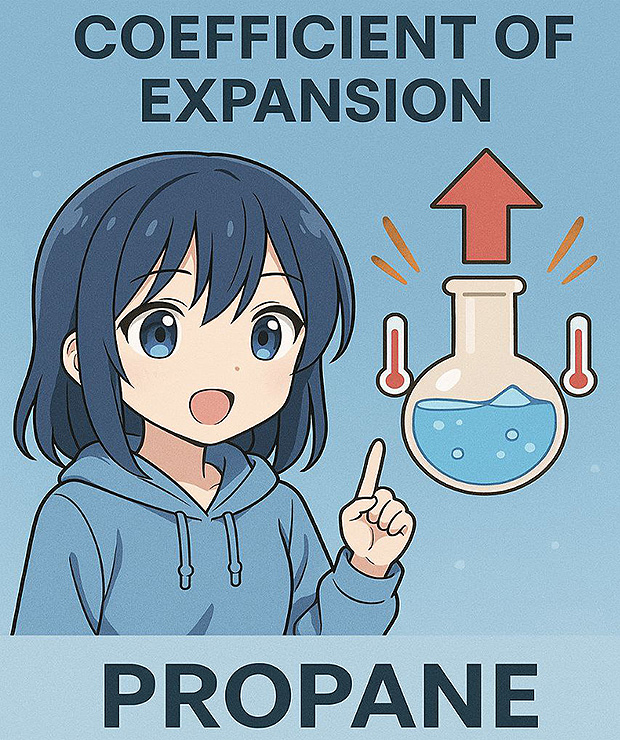
When the temperature rises, propane expands by 30% more than butane
For this reason, 80% of the volume of a portable gas cartridge is occupied by butane - this is done in order to reduce the risk of explosion of the cylinder when the temperature rises.
The boiling point of propane is significantly lower (-42.1 ° C) than that of butane (-0.5 ° C). In other words, a gaz mixture with a large amount of propane will work stably at lower temperatures.
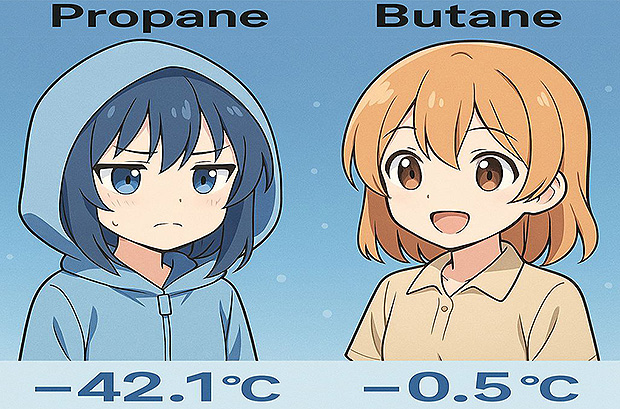
Mixtures with a low propane content are not effective when used in cold conditions
For this reason, manufacturers of portable gas cartridges still add propane to the mixture in a small amount of more or less 20% so that the fuel has resistance to low temperatures.
In the case of refilling a portable cartridge with household gas from an ordinary gas station, the butane-propane proportion changes, since the household and car gas cylinders are designed for a different composition of the gas mixture, mainly with a higher propane content.
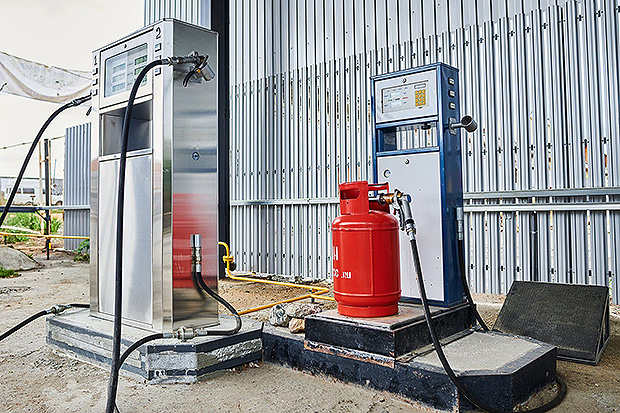
Station for filling household and automobile gas cylinders
The standard proportion of the LPG gas mixture at an ordinary gas station depends on the season and can include from 40% to 80% propane.
This ratio of components does not correspond to the technical characteristics of portable gas cylinders and requires the use of special, more durable tanks.
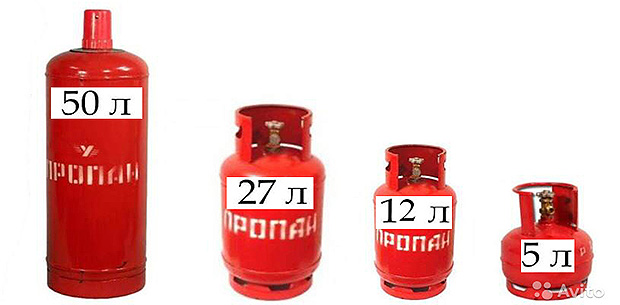
Standard household propane gas cylinders (Russian type)
For the safety all thin-walled portable cartridges are equipped with a pressure relief device - a concave bottom - you can easily notice this feature by turning any tourist cylinder upside down.
When there is excess pressure, the concave bottom swells, creating additional volume inside the cartridge providing pressure release - this ensures the explosion safety of the cartridge.
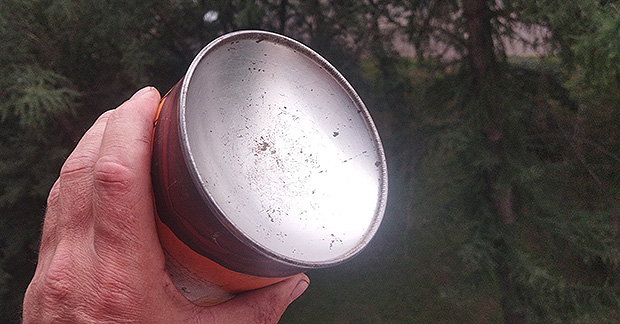
The concave bottom of the portable cylinder is a pressure relief device
Bulging of the bottom is a common emergency with refilled tourist cylinders. This problem can be caused by banal greed - you should not fill the entire space inside an empty cylinder with gas, there should always be room for expansion of the mixture.
A swollen cylinder be used until it is empty, but it cannot be filled with gas anymore - the overpressure protection mechanism will no longer work, and the cylinder can explode.
Now from "why you should not" I will move on to why, after all, portable cartridges are refilled.
There are two main arguments in favor of refilling "disposable" cylinders
Economic aspect - refilling is at least 60 times cheaper than buying a new cylinder. The main cost of the cartridge consists of the cost of the vessel, not its contents. A new gas cylinder with a capacity of 450 g of gas in the store costs 11-15 USD, while the cost of the fuel is only 0.2 USD.
The cost of a canister, which the manufacturer requires to be disposed of in some non-obvious way after use, is at least 10.5 USD. That is an obvious benefit for the manufacturer, but dubious economics for the consumer.
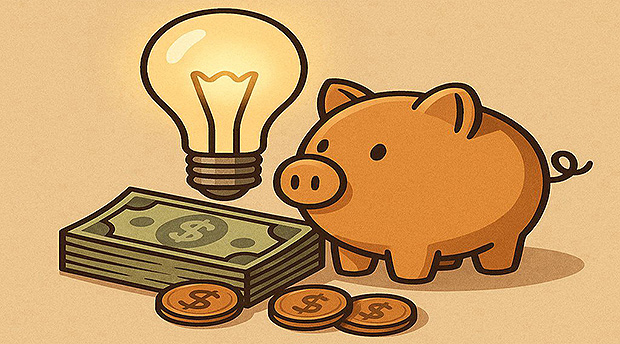
The economy should be economical
With such a difference in cost, there is a very serious reason to neglect safety rules and, nevertheless, reuse disposable cartridges.
Moreover, a factory device for refilling these cartridges is easily purchased on any marketplace - it's price is about 20 USD. This useful device pays for itself on the refilling of the second cartridge - even if you bought a cylinder in a store, and did not pick up an empty one from the trash.
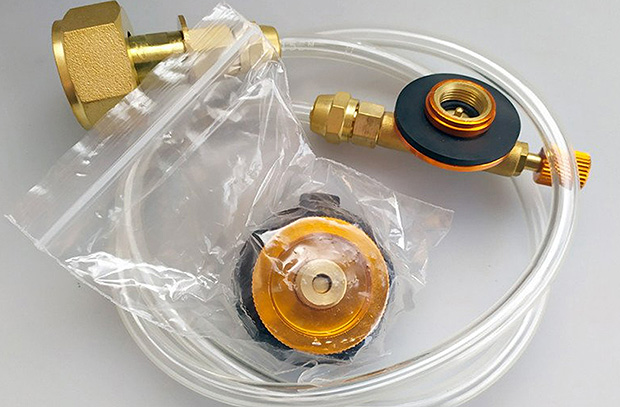
Refilling device for threaded cylinders and collet adapter for EN 417
Environmental aspect. Empty gas cylinders generate garbage. These are one of the most common items that remain at tourist sites after their visit by irresponsible people.
I don't want to justify such behavior in any way, but it is necessary to clarify that there is no mechanism for recycling this specific garbage in many countries - so people just do not know what to do with used gaz cartridges.
It is completely unclear how to properly deal with used gas cartridges. But one thing can be said with complete certainty - throwing an empty cylinder into the bushes or under a nearby rock is a disgusting tourist piggery.
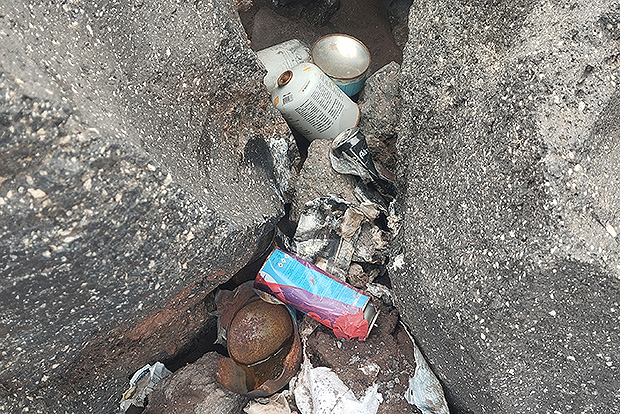
Many beautiful routes in the mountains are highly polluted with the garbage
In my opinion, in terms of ecology, it would be right to reuse cartridges. In this case, even if there is no basic outdoor culture, then at least there is a formal reason not to throw away an empty cylinder.
Summary: refilling disposable cartridges contradicts basic safety rules, but makes their use many times cheaper and, more importantly, reduces the harmful influence on the environment, since the amount of garbage is reduced.
If, at your own risk, you decide to refill a disposable gas cartridge, here are the very simple safety rules:
- The contents of the cylinder are extremely flammable!!! Gas can only be refilled in the open air, away from any sources of fire
- Only high-quality factory equipment can be used for refilling - no homemade devices!
- Use for refilling only cartridges that do not have damage of the body or valve
- Use scales to control the amount of gas being filled
- Never fill a cartridge either "to the brim" or even to the nominal weight indicated on the cylinder body - do not forget about the difference in the expansion coefficient of the mixture
- At any sign of leakage - reject and dispose of the cylinder
Author of text - Alex Trubachev
Your guide to mountaineering, ice climbing and rock climbing
MCS EDIT 2025
Our Principles
AlexClimb Rule #1 - Safety First
From the very beginning of our activity, here nearly 16 years, the first Principle of work of School of mountaineering and rock-climbing of MCS AlexClimb is the Safety Priority. On the basis of this Principle all process of training is based, all programs and rounds are developed and carried out only within this main principle. We consider that at professional approach to development of programs, at personal discipline and correctly put motivation - occupations by mountaineering and rock-climbing are COMPLETELY safe. And from the return - all troubles and accidents in our sport come from nonprofessionalism, from ignorance or neglect by elementary standards of safety, from irrational motivation, from revaluation of own forces and opportunities. All these prerequisites we COMPLETELY EXCLUDE in our work - ours Rock-climbing, Ice climbing and Mountaineering are based on one Principle - the Safety Priority. In rock-climbing, mountaineering and ice climbing, the Priority of Safety of MCS AlexClimb-is your personal security and comfort irrespective of, than we are engaged - we train muscles and we work technology of the movement in the sports hall and on the rock climbing wall, we make the way through snowstorm to top or we relax on golden sand of the Caribbean beach after hot day of trainings on rocks. The Safety priority - the main credo of School of mountaineering and rock-climbing of MCS AlexClimb.
AlexClimb Rule #2 - Leave No Trace
Closely interacting with Nature, working with the active programs in mountains, woods, lakes and rivers, we perfectly understand the importance of carefull and respectfull bahavior towards the Nature, for its resources. From the very beginning of our outdoor-activity we adopted rules of Leave No Trace technique - the standard of behavior of the person accepted in all the civilized world in relation to environment and especially - to the wild nature. After all on the relation of people to the nature near which they exist, itself can draw dalekoidushchy conclusions on the relation of these people to... Where and as we didn't travel - we don't reserve any garbage, we try to reduce whenever possible our influence on environment to a minimum. We clear earlier zagryazyonny tourist parking of the left garbage, we take out and we take out to utilization places that to us other people left there. We consider that only thus, at personal individual consciousness of each citizen, each tourist, climber or autotraveller, we will be able to keep the nature surrounding us in its state, natural, suitable for life, - in it pledge of the healthy future for ourselves and our children.





